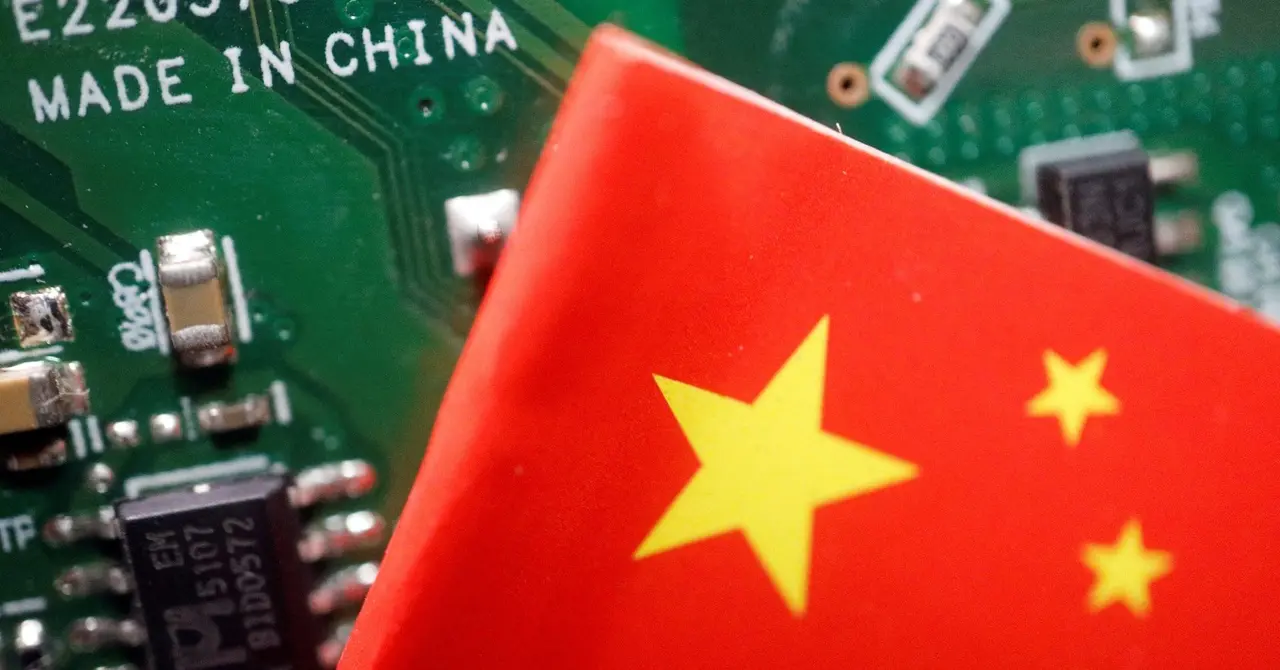OpenAI's VP of Research and Safety Lilian Weng Departs Amid Safety Team Exodus
2 Sources
2 Sources
[1]
AI News: Lilian Weng Exits OpenAI Adding To a List of Safety Team Departures
AI news: Lilian Weng, OpenAI's VP of Research and Safety, recently announced her decision to leave the company after seven years. In her role, Weng played a central part in developing OpenAI's safety systems, a critical component of the company's responsible AI strategy. Her departure, effective November 15, follows a recent wave of exits among OpenAI's AI safety personnel, including figures like Jan Leike and Ilya Sutskever. The two co-led the Superalignment team, an initiative focused on managing superintelligent AI. In a post on X, formerly Twitter, Lilian Weng explained her decision to step down from OpenAI, a company she joined in 2018. Weng stated that, after seven years, she felt it was time to "reset and explore something new." Her work at OpenAI included a prominent role in developing the Safety Systems team, which expanded to over 80 members. More so, Weng credited the team's achievements, expressing pride in its progress and her confidence that it would continue to thrive after her departure. However, Weng's exit highlights an ongoing trend among OpenAI's AI safety team members, many of whom have raised concerns over the company's shifting priorities. Weng first joined OpenAI as part of its robotics team, which worked on advanced tasks like programming a robotic hand to solve a Rubik's cube. Over the years, she transitioned into artificial intelligence safety roles, eventually overseeing the startup's safety initiatives following the launch of GPT-4. This transition marked her increased focus on ensuring the safe development of OpenAI's AI models. In recent AI news, Weng did not specify her plans but stated, "After working at OpenAI for almost 7 years, I decide to leave. I learned so much and now I'm ready for a reset and something new." OpenAI recently disbanded its Superalignment team, an effort co-led by Jan Leike and co-founder Ilya Sutskever to develop controls for potential superintelligent AI. The dissolution of this team has sparked discussions regarding OpenAI's prioritization of commercial products over safety. According to recent AI news, OpenAI leadership, including CEO Sam Altman, placed greater emphasis on releasing products like GPT-4o, an advanced generative model, than on supporting superalignment research. This focus reportedly led to the resignations of both Leike and Sutskever earlier this year, followed by others in the AI safety and policy sectors at OpenAI. The Superalignment team's objective was to establish measures for managing future AI systems capable of human-level tasks. Its dismantling, however, has intensified concerns from former employees and industry experts who argue that the company's shift toward product development may come at the cost of robust safety measures. In recent AI news OpenAI introduced ChatGPT Search, leveraging the advanced GPT-4o model to offer real-time search capabilities for various information, including sports, stock markets, and news updates. Moreover, Tesla CEO, Elon Musk has voiced concerns about the risks posed by AI, estimating a 10-20% chance of AI developments turning rogue. Speaking at a recent conference, Musk called for increased vigilance and ethical considerations in AI advancements. He emphasized that AI's rapid progress could soon enable systems to perform complex tasks comparable to human abilities within the next two years.
[2]
OpenAI loses another lead safety researcher, Lilian Weng
Another one of OpenAI's lead safety researchers, Lilian Weng, announced on Friday she is departing the startup. Weng served as VP of research and safety since August, and before that, was the head of the OpenAI's safety systems team. In a post on X, Weng said that "after 7 years at OpenAI, I feel ready to reset and explore something new." Weng said her last day will be November 15th, but did not specify where she will go next. "I made the extremely difficult decision to leave OpenAI," said Weng in the post. "Looking at what we have achieved, I'm so proud of everyone on the Safety Systems team and I have extremely high confidence that the team will continue thriving." Weng's departure marks the latest in a long string of AI safety researchers, policy researchers, and other executives who have exited the company in the last year, and several have accused OpenAI of prioritizing commercial products over AI safety. Weng joins Ilya Sutskever and Jan Leike - the leaders of OpenAI's now dissolved Superalignment team, which tried to develop methods to steer superintelligent AI systems - who also left the startup this year to work on AI safety elsewhere. Weng first joined OpenAI in 2018, according to her LinkedIn, working on the startup's robotics team that ended up building a robot hand that could solve a Rubik's cube - a task that took two years to achieve, according to her post. As OpenAI started focusing more on the GPT paradigm, so did Weng. The researcher transitioned to help build the startup's applied AI research team in 2021. Following the launch of GPT-4, Weng was tasked with creating a dedicated team to build safety systems for the startup in 2023. Today, OpenAI's safety systems unit has more than 80 scientists, researchers, and policy experts, according to Weng's post. That's a lot of AI safety folks, but many have raised concerns around OpenAI's focus on safety as it tries to build increasingly powerful AI systems. Miles Brundage, a longtime policy researcher, left the startup in October and announced that OpenAI was dissolving its AGI readiness team, which he had advised. On the same day, the New York Times profiled a former OpenAI researcher, Suchir Balaji, who said he left OpenAI because he thought the startup's technology would bring more harm than benefit to society. OpenAI tells TechCrunch that executives and safety researchers are working on a transition to replace Weng. "We deeply appreciate Lilian's contributions to breakthrough safety research and building rigorous technical safeguards," said an OpenAI spokesperson in an emailed statement. "We are confident the Safety Systems team will continue playing a key role in ensuring our systems are safe and reliable, serving hundreds of millions of people globally." Other executives who have left OpenAI in recent months include CTO Mira Murati, chief research officer Bob McGrew, and research VP Barret Zoph. In August, the prominent researcher Andrej Karpathy and co-founder John Schulman also announced they'd be leaving the startup. Some of these folks, including Leike and Schulman, left to join an OpenAI competitor, Anthropic, while others have gone on to start their own ventures.
Share
Share
Copy Link
Lilian Weng, OpenAI's VP of Research and Safety, announces her departure after seven years, adding to a growing list of safety team exits at the AI company. This move raises questions about OpenAI's commitment to AI safety versus commercial product development.

OpenAI Loses Key Safety Researcher Amid Growing Exodus
Lilian Weng, OpenAI's Vice President of Research and Safety, has announced her departure from the company after a seven-year tenure. Set to leave on November 15, Weng's exit marks another significant loss for OpenAI's safety team, following a series of high-profile departures in recent months
1
2
.Weng's Contributions and Role at OpenAI
Weng joined OpenAI in 2018, initially working on the robotics team that achieved the notable feat of programming a robotic hand to solve a Rubik's cube
2
. As the company shifted its focus towards language models, Weng transitioned to AI safety roles. She played a crucial part in developing OpenAI's safety systems, a critical component of the company's responsible AI strategy1
.In her most recent role, Weng oversaw the startup's safety initiatives following the launch of GPT-4. Under her leadership, the Safety Systems team grew to over 80 members, comprising scientists, researchers, and policy experts
2
.A Pattern of Safety Team Departures
Weng's departure is part of a concerning trend at OpenAI. Several key figures from the AI safety and policy sectors have left the company in the past year, including:
- Jan Leike and Ilya Sutskever, co-leaders of the now-dissolved Superalignment team
- Miles Brundage, a longtime policy researcher
- Suchir Balaji, a former OpenAI researcher who expressed concerns about the societal impact of the company's technology
2
These departures have raised questions about OpenAI's priorities, with some former employees accusing the company of favoring commercial product development over robust safety measures
1
2
.Related Stories
Shifting Priorities at OpenAI
The dissolution of the Superalignment team, which aimed to develop controls for potential superintelligent AI, has intensified concerns about OpenAI's commitment to safety. Reports suggest that CEO Sam Altman and other leaders have placed greater emphasis on releasing products like GPT-4o, an advanced generative model, rather than supporting superalignment research
1
.This shift in focus has not gone unnoticed in the AI community. Elon Musk, CEO of Tesla, has voiced concerns about the risks posed by AI, estimating a 10-20% chance of AI developments turning rogue. Musk has called for increased vigilance and ethical considerations in AI advancements
1
.Industry-wide Implications
The exodus of safety researchers from OpenAI highlights a broader debate within the AI industry about balancing rapid technological advancement with responsible development. As companies race to create more powerful AI systems, the need for robust safety measures becomes increasingly critical
1
2
.OpenAI has stated that executives and safety researchers are working on a transition to replace Weng. The company expressed appreciation for Weng's contributions and affirmed its commitment to ensuring the safety and reliability of its systems
2
.As the AI landscape continues to evolve, the industry will be watching closely to see how OpenAI and other leading companies address the crucial balance between innovation and safety in the development of artificial intelligence.
References
Summarized by
Navi
[2]










